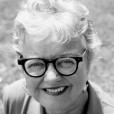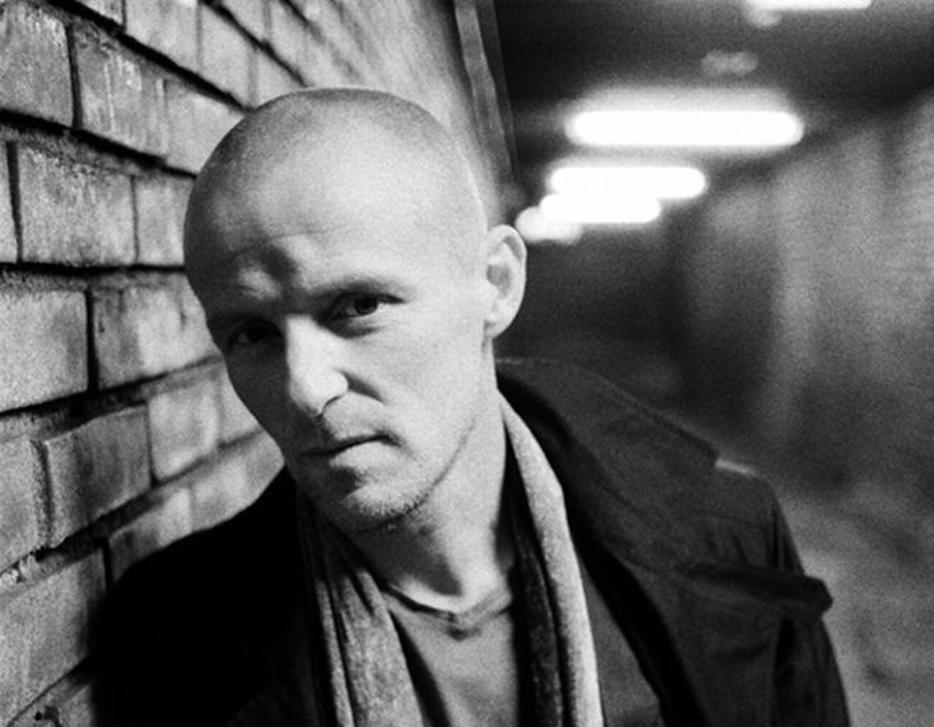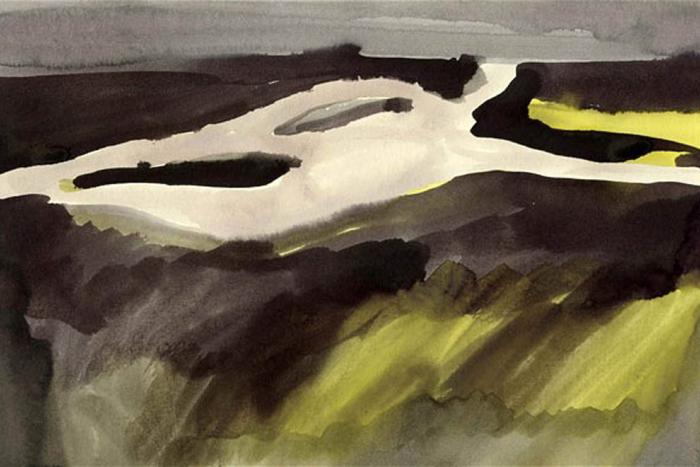A lively, attractive raconteur with a self-deprecating laugh, Jo Nesbø was no stranger to fame well before his 16 crime novels brought him more than 14 million book sales in 40 languages. A promising future as a professional footballer induced him to drop out of high school, but when cruciate ligament injuries sidelined him, he resumed his education, obtaining a business degree and eventual work as a successful stockbroker and financial analyst. Music was a hobby, but then Jo Nesbø the songwriter became lead singer of Di Derre (Those Guys). He and his band members attained rock stardom. Although he had made an early attempt at a novel, it was only in 1997 that Nesbø determinedly turned his hand to fiction, with The Bat.
Just after his arrival at the recent International Festival of Authors in Toronto, Nesbø was soft- but well-spoken, jet-lagged but engaging, his light brown hair cropped short, his Norwegian blue eyes sharply focused. The youthful 52-year-old author is best known for a series of nine thrillers featuring the Oslo police detective Harry Hole (pronounced Hool-eh), an impassioned solver of crimes who is sometimes on the wrong side of the law himself and notoriously given to drink and defiance of authority. Martin Scorsese is set to direct a film adaptation of The Snowman, one of Nesbø’s grislier Hole stories.
His mother was a librarian and his father a book collector when Nesbø was growing up in Molde, Norway. Surrounded by books, he was a big reader; his father’s storytelling inspired in him a habit of telling ghost stories. An attraction to the ghoulish lay dormant for years but once unleashed, his talent for depicting the bizarre and puzzling turns of the darker side of humanity has known no bounds. Father to a 13-year-old daughter, Nesbo has also written a series of children’s books, starting with Doctor Proctor’s Fart Powder, some non-fiction and fiction outside the Hole series, including Headhunters, released as a film last year.
Originally published as Flaggermusmannen in 1997 by H. Ashehoug & Co. (W. Nygaard), The Bat has just now been published in the U.K. and Canada in an English translation by Don Bartlett. Its hero (almost an anti-hero) Harry Hole was conceived on board a flight to Australia when Nesbo, burnt out from doing gigs with his very popular band by night and slaving in the options division of Norway’s biggest brokerage firm by day, took a leave of absence.
The Bat brought Nesbo immediate recognition and set him on an unusual path to bestsellerdom as a creator of very nasty criminal behavior involving intriguing characters. In his own words, an entertainer, he is at the same time a thoughtful participant in the literary life, more likely to be found reading Jonathan Franzen than one of his fellow crime writers and well aware of the necessities of his chosen genre: never let your reader down by slipping into a formula for suspense.
When The Bat came out in Norway in 1997, it would have been obvious to critics and readers that you were not a first-time writer. In fact, you began writing song lyrics in your early twenties. Is there a relationship between composing song lyrics and creating novels?
I probably learned more from writing lyrics that came in handy when I started writing novels than anything else I’ve done. You are restricted to three verses and a chorus. That’s very useful for a novel. You get an understanding of how much you can direct your readers and how much can be left to the reader’s imagination. The writer should only give so much.
Up until now, millions of English-language readers of your Harry Hole series have not known the whole story of what makes Harry the somehow haunted man that he is. You’ve said that Harry was born on the plane between Oslo and Sydney, Australia. What were the circumstances that led to your writing the first Harry Hole book?
I had done 180 gigs with the band that year (in addition to working as a stockbroker). I needed a break and I went to Australia with a friend of mine. He only had two weeks off work and I stayed on. I started writing as soon as I got on the plane, planning the novel. In Australia I was pretty jet-lagged and I started writing when I woke up in the middle of the night.
What drove me in The Bat was the curiosity about how to write a novel. The first version I did in five weeks. I’ve never written a book that fast since. I would write some days for 16 hours. While my pal was there, he was, “Hey what’s going on? I was going to show you some of Australia and you’re just sitting in your room writing. What kind of holiday is this?” He would go to all of these places where he used to go and they were great places. Harry would more or less follow in my footsteps.
Sydney’s red light district in King’s Cross, Bondi Beach, the Sydney aquarium, the little town of Nimbin in northern New South Wales—these were all places you visited?
Yes. If we were going up north to see some part of the city, I would take Harry there. Stanley Kubrick used to decide on five or six scenes that would be in a movie, and he didn’t know exactly what the scenes had to do with each other. It was a bit the same with The Bat. I had these places where I went, and I wasn’t sure how they fitted into the story, but I knew that these were the locations.
Powerful relationships, whether friendships or romance are a hallmark of your Harry Hole novels. In The Bat, you have Harry form a deep friendship with an Aboriginal police detective, Andrew Kensington, from the moment they meet at the Sydney airport. Soon after, Harry falls head-over-heels in love with Birgitta, a server in a strip bar. How important are these relationships to the construction of your thrillers?
There’s a Norwegian writer called Aksel Sandemose who said the only two things worth writing about were love and murder. And he was not a crime writer.
Through Andrew, Harry absorbs some aboriginal culture and the stories of Walla and Moora and the mythological monster snake Bubbur. How did this lore become integral to the structure of The Bat?
It wasn’t planned. I went to the Australian Museum in Sydney and I discovered aboriginal storytelling. I found these stories very strange, unlike anything else I’d read. In most of the rest of the world we have an idea of how a story should work, you know, in a three-act structure. But these stories were nothing like that. They would start and be told without any sort of conclusion, or a conclusion you wouldn’t understand. After a while I got into their rhythm. They inspired me. I knew I had to put them into this story.
After you returned to Oslo, you approached a publisher?
I knew a girl who worked at a publishing house. She asked me if I could write something for them, a story about the band travelling on the road in Norway. But there’s an old rule that what happens on the road stays on the road. So I didn’t want to do that, but I thought I might write something else. When I came back from Australia, I sent the manuscript to her. She used a pseudonym for me when she sent it to some of the editors. Three weeks later they phoned me back and said they were interested in the novel and they wanted to publish it.
They asked me why I’d used a pseudonym and I told them I’m this famous singer in this famous band. So I told them my name and nobody had heard of me. [Laughs] They should have, because at the time we were the bestselling band in Norway. But some bands you know all the individuals and they’re in all the magazines and they’re on the covers of their albums and so on. But we were kind of this faceless band. People knew the songs, but they didn’t know what we looked like.
I remember one time two guys were sitting beside me in a cafe and they were talking about the band and they looked over at me, two or three times, and I knew they were going to ask if it was me or ask for an autograph. Finally one reached over and said, “May I borrow your ashtray?”
So why bother with a pseudonym?
Before I was first published, I was worried. It’s reasonable that people are suspicious when Madonna publishes a children’s book. Or when any kind of celebrity known for something else publishes a book. I thought if the singer of the bestselling band in Norway comes to a publishing house with a manuscript he wants to publish, they will let him do that, no matter how bad it is. So I had a concern that the critics would rip me apart. On the other hand I was quite confident, not that people would like it, but that this was the book I wanted to write.
I knew it wasn’t perfect novel and it isn’t. It’s the only novel of mine that I’ve read again from start to end. I see now that I made mistakes or got carried away. But I was happy when I re-read it because it’s so fresh. You can tell it’s written by a guy who’s in love with something that he’s just discovered: writing a novel.
I can see it’s more light-hearted than the later books. I think both Harry and I were more light-hearted. There’s more humour in it. And I can tell when I read it, that it’s almost bursting with energy.
The Harry Hole books, especially from The Snowman forward, are increasingly dark, more grotesquely violent and Harry himself a far from innocent character. Yet you seem to have a huge following among women readers. Has this surprised you?
Well yeah, I was a bit surprised. I didn’t really aim at a female audience. I did have in mind two friends of mine, with whom I share a taste in popular culture. They were two guys I wanted to impress. After a while I noticed that there were many female readers interested in the books, but I think especially in Harry. I think maybe they feel sorry for him. He’s emotionally damaged by his past and I think that women tend to want to fix people like that.
There is a challenge faced by every writer of serial crime fiction. How do you maintain interest in a character without repeating yourself or getting stuck in a formula?
I never start off saying, OK what are we going to do today? We’re going to write the new Harry Hole novel. My starting point is always an idea for a story and I ask myself, OK what kind of story is this? Is it for children? Is it a book for adults? Is it short stories? Is it a novel? Is it a Harry novel? And sometimes it is.
He is a very useful character. He can be used for many things. He doesn’t have to be the outsider, the investigator. He can be part of the case, if I want him to. In the latest books he is more and more of a driving force. He is part of the drama.
How old is Harry now?
He’s in his forties. I don’t think he’s going to die of old age. Right now I am working on a stand-alone novel.
What book made you a bestselling author?
The Redbreast was the breakthrough novel. The Bat was critically acclaimed, but it didn’t sell that much. It won the prize for the best Norwegian crime novel, also the Glass Key for best Nordic crime novel. The sales wouldn’t have allowed me to be a full-time writer. Although I was: I had been overpaid for years. I had my own apartment and I could keep on writing for a while. But The Bat established me as a writer with the critics. Normally it’s the other way around. Although I feel I must entertain my readers, it’s my honest goal to write pulp fiction.






